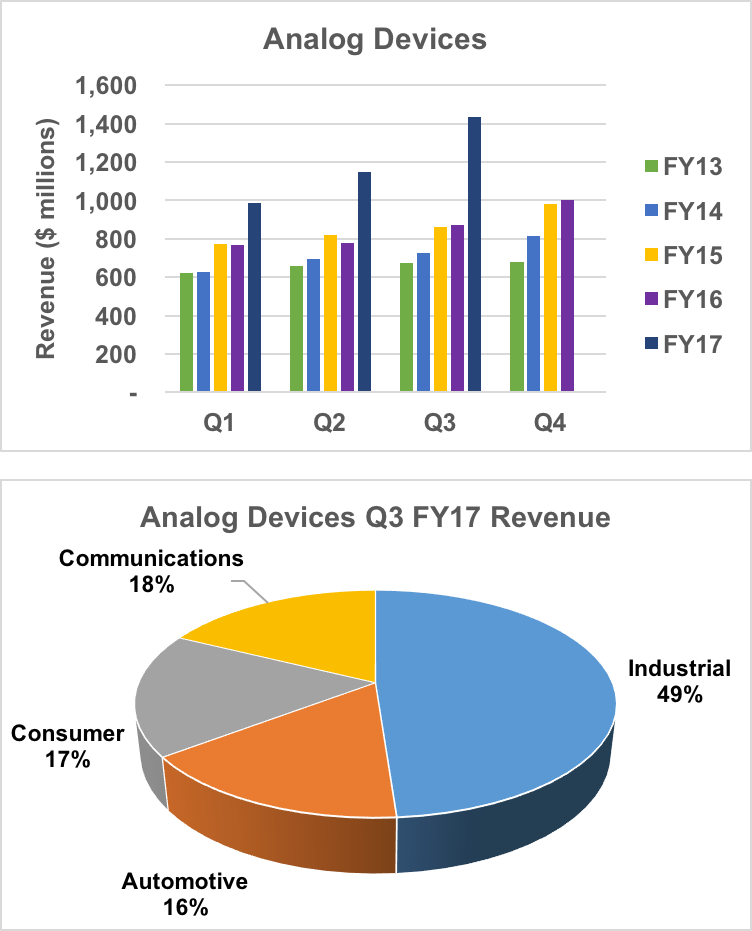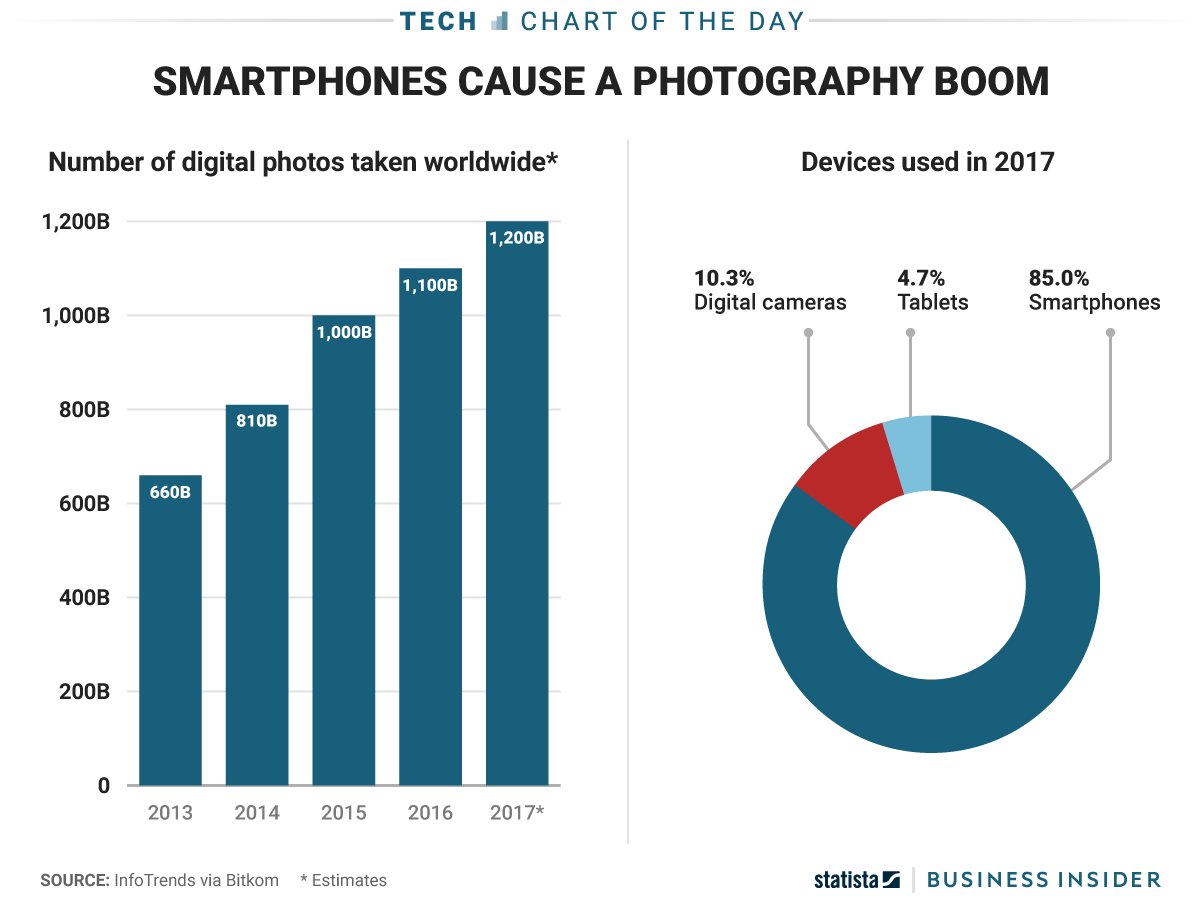Here’s the roundup of interesting news from the past week.
Companies and Products
Analog Devices reported fiscal Q3 revenue of $1.4 billion, 25 percent above Q2 and 65 percent greater than last year’s quarter. These results reflect the first full quarter’s contribution from Linear Technology.

Analog Devices is cosponsoring a project that will use the IoT and blockchain technology to track the conditions and movement of produce from “farm to fork,” helping farmers make decisions to improve quality, yields and profitability.
According to The New York Times, Apple redefined the objectives of its oft-cited yet mysterious self-driving car project. Rather than fielding its own car, Apple apparently intends to develop systems for autonomous vehicles.
BAE Systems selected Harris to supply phased array antennas for the EW transmitter on the AC/MC-130J special operations aircraft. According to BAE Systems, the EW system supports armed over-watch, helicopter refueling, close air support and interdiction missions in the most sensitive and hostile territories.
Keysight Technologies reported fiscal Q3 revenue of $832 million, which includes the financial contribution from the Ixia acquisition. Compared to the prior year’s quarter, revenue was up 16 percent.

Keysight said that commercial communications revenue was flat, year-over-year, and A&D revenue was down 5 percent, reflecting market softness from the U.S. government. A bright spot was the growth in 5G. On the earnings call, Satish Dhanasekaran, president of the Communications Solutions Group, discussed 5G market development and how Keysight is positioned to play.
Filter start-up Resonant secured an agreement with a new customer — their eighth — to develop five filters for mobile phones.
Skyworks released a PIN diode voltage variable attenuator (VVA) that operates from 10 MHz to 1.5 GHz. At 700 MHz, the minimum insertion loss is 2.5 dB, maximum attenuation is 40 dB and the input IP3 is +50 dBm.
Wolfspeed added a 250 W, 3 GHz GaN HEMT to their 50 V family of GaN on SiC power transistors. The CGHV40200PP achieves 67 percent efficiency at 1.8 GHz.
Markets and Technology
Cellular/5G — Ericsson announced three products for small cell deployments, including a multi-operator version of its Dot small cell and a “strand-mount” that will hang up to four small cell radios from utility lines.
China Mobile and Huawei joined the Gbps LTE PR party, reporting a 1.09 Gbps data rate using TDD with a single 20 MHz carrier.
Meanwhile, Verizon, Ericsson, Qualcomm and Federated Wireless demonstrated carrier aggregation using the U.S. 3.5 GHz citizen broadband radio service (CBRS) spectrum. The demo used 2 x 20 MHz LTE carriers with 256-QAM on the downlink; the companies did not disclose the data rate demonstrated.
With the projected data rates for 5G, some have questioned whether point-to-point radio will remain viable for backhaul. Emmy Johnson of Sky Light Research says predictions of the demise of radio aren’t warranted; it will do just fine.
Broadband — AT&T plans to expand millimeter wave fixed wireless trials to Waco, Texas; Kalamazoo, Michigan; and South Bend, Indiana by the end of the year. Trials in Austin are achieving data rates up to 1 Gbps download and latency “well under” 10 ms, according to AT&T.
Looking to 6G, perhaps 7G, researchers at the University of California Davis demonstrated a standing wave 2D phased array IC operating from 318 to 370 GHz that was fabricated in 0.13 μm CMOS. If you have a subscription to IEEE Xplore, you can read the paper presented at the 2017 IEEE International Solid State Circuits Conference.
Defense — In a successful test of ballistic missile defenses, the USS John Paul Jones fired two Raytheon SM-6 missiles to intercept a test missile off Hawaii. According to Raytheon, this was the third time that the SM-6 missile successfully engaged a ballistic missile target in its terminal phase. The missiles incorporated an enhanced capability to improve the probability of hitting a medium-range ballistic missile. Raytheon compressed the development time for the new capability to seven months.
Technology and Society — Hurricane Harvey was the latest example of communications networks not surviving a disaster. While some have proposed satellites to aid first responders, one team believes using drones to form an ad hoc cellular network is the solution. Read the story of the design journey, the challenges overcome and those still to be solved.
In four African countries — Ghana, Kenya, Morocco and Nigeria — Facebook and WhatsApp are the favorite social media tools, preferred over YouTube and Twitter.
The best camera is the one you have with you. InfoTrends forecasts that 1.2 trillion digital photos will be taken this year, 85 percent using smartphones.

Last Word — From Seth Godin, one of my favorite authors because of his unique perspective on personal empowerment, marketing, business and the internet: Nothing matters more than results.
Thoughts? Please share them by leaving a comment below.

